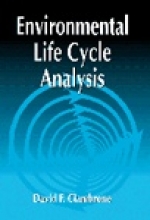Tab Article
The trend in industry and with the EPA is to prevent wastes before they are created instead of treating or disposing of them later. This book assists design/systems engineers and managers in designing or changing a product or set of processes in order to minimize the negative impact on the environment during its life cycle. It explains the overall concept of environmental life cycle analysis and breaks down each of the stages, providing a clear picture of the issues involved.
Chapters 1 and 2 provide an introduction and overview of the environmental life cycle analysis process. Chapter 3 establishes the basis and methodologies required for analysis through description of the basic framework, definition of boundaries, use of checklists, data gathering processes, construction of models, and interpretation of results. Templates and special cases that may be encountered and how to handle them are addressed in Chapter 4. Chapters 5 through 9 go into detail about modeling, issues, and data collection for each stage of the product life cycle. The final chapter provides a summary of the various steps and offers ideas on how to present data and reports.


